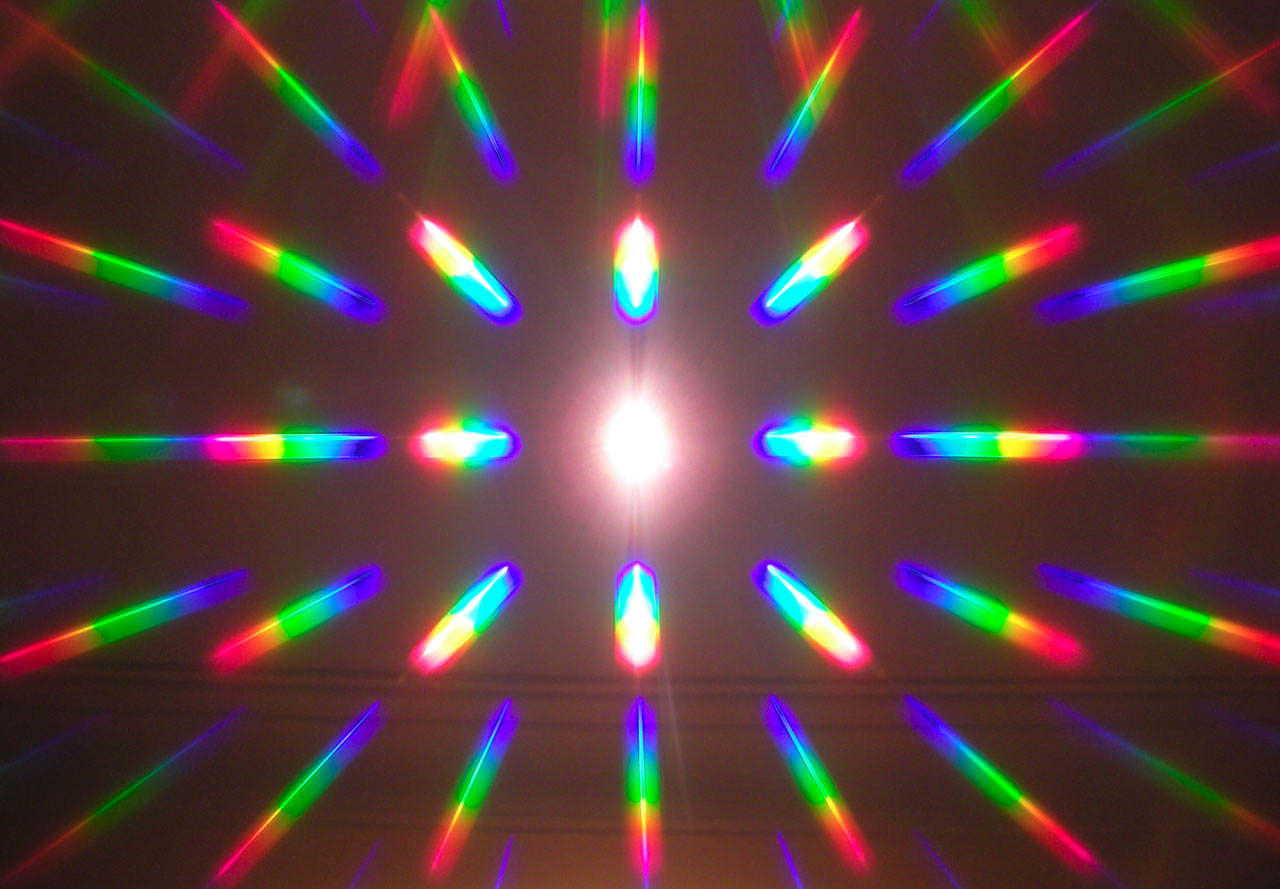
Explaining his results by interference of the waves emanating from the two different slits, he deduced that light must propagate as waves. Thomas Young performed a celebrated experiment in 1803 demonstrating interference from two closely spaced slits. James Gregory (1638–1675) observed the diffraction patterns caused by a bird feather, which was effectively the first diffraction grating to be discovered. Isaac Newton studied these effects and attributed them to inflexion of light rays. The results of Grimaldi's observations were published posthumously in 1665. The effects of diffraction of light were first carefully observed and characterized by Francesco Maria Grimaldi, who also coined the term diffraction, from the Latin diffringere, 'to break into pieces', referring to light breaking up into different directions. History Thomas Young's sketch of two-slit diffraction for water waves, which he presented to the Royal Society in 1803. In this case, when the waves pass through the gap they become semi-circular. Diffraction is greatest when the size of the gap is similar to the wavelength of the wave. The amount of diffraction depends on the size of the gap. Furthermore, quantum mechanics also demonstrates that matter possesses wave-like properties and, therefore, undergoes diffraction (which is measurable at subatomic to molecular levels). These effects also occur when a light wave travels through a medium with a varying refractive index, or when a sound wave travels through a medium with varying acoustic impedance – all waves diffract, including gravitational waves, water waves, and other electromagnetic waves such as X-rays and radio waves. If there are multiple, closely spaced openings (e.g., a diffraction grating), a complex pattern of varying intensity can result. This is due to the addition, or interference, of different points on the wavefront (or, equivalently, each wavelet) that travel by paths of different lengths to the registering surface. The characteristic bending pattern is most pronounced when a wave from a coherent source (such as a laser) encounters a slit/aperture that is comparable in size to its wavelength, as shown in the inserted image. In classical physics, the diffraction phenomenon is described by the Huygens–Fresnel principle that treats each point in a propagating wavefront as a collection of individual spherical wavelets. Infinitely many points (three shown) along length d d project phase contributions from the wavefront, producing a continuously varying intensity θ \theta on the registering plate.

Italian scientist Francesco Maria Grimaldi coined the word diffraction and was the first to record accurate observations of the phenomenon in 1660.

The diffracting object or aperture effectively becomes a secondary source of the propagating wave. Diffraction is the interference or bending of waves around the corners of an obstacle or through an aperture into the region of geometrical shadow of the obstacle/aperture.


 0 kommentar(er)
0 kommentar(er)
